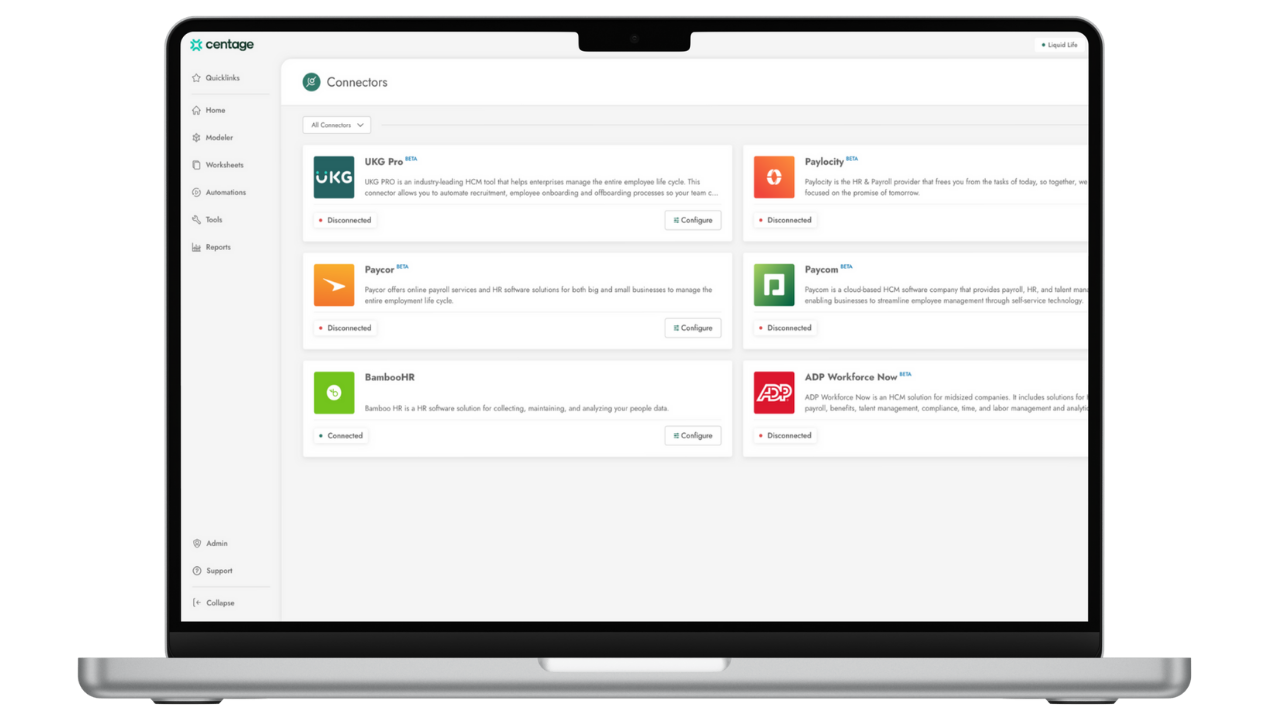Financial Consolidation & Data Transformation - FP&A
Keeping Pace with the New Normal
As a follow up to my blog from earlier this month, The New Normal: Financial Consolidation and Data Transformation, I concluded that as the impacts of the pandemic ease, there are some big questions corporate leadership are asking that require answers from the Finance team. And those answers demand a fast and accurate consolidation of financial and business data in order to be answered completely and accurately. However, there are some steps that need to be taken before that can happen.
Taming the Havoc For Financial Consolidation
Finance teams can’t begin to provide the answers their business partners from across the organization need until they tame the havoc of past growth strategies. For example, while M&A’s undeniably bring breadth and depth to a company, they also bring massive challenges to financial teams. Many SMBs manage their financials manually, piecing together budgets and forecasts in spreadsheets that are separate from other business systems. Or, an acquired company may use a financial platform that is incompatible with the new parent company’s infrastructure. As a result, the financial data remains siloed until budget season, when forecasts are pieced together in spreadsheets. Which as we know, doesn’t always turn out to be the best option for many reasons.Outside of M&As, the financial consolidation process is difficult enough as it usually involves consolidating financial data from various divisions or P&Ls. Different divisions use different platforms, and have varying degrees of automation. Decentralized accounting, inter-entity transactions, and dealing with multiple currencies means finance teams are often mired in the manual creation of reports. As a result, obtaining a consolidated view of a company’s financials across an entire organization is a quarterly exercise at best, and is often more “art” than science.
The Role of Financial Consolidation Software In the New Normal
The New Normal requires nearly real-time understanding of an organization’s financial health across all divisions, subsidiaries, product lines or any other P&L. A CEO wants to know the company’s EBITDA or top line growth looks like, and to see which P&L’s are harming the company’s bottom line. Many software platforms will automate the consolidated financial statements for complex companies, as well as deliver many other benefits, such as improving the audit trail intercompany matching and eliminations. These systems typically integrate with the ERP, GL and other business systems to provide a unified approach for reporting and strategizing.
Challenges to Financial Consolidation Systems
Lack of Robust Forecasting ToolsMost financial consolidation software have limits that hobble the finance team’s ability to guide the company in the New Normal. Chief among those limits is a lack of robust forecasting tools that allow the finance team to assess, say, a new corporate structure and test its impact on the financial statements. Cumbersome Financial ModelsThe pandemic changed the way people shop, live and work, forcing many companies to make fast decisions on how to pivot. In its aftermath financial teams are asked to inform strategic decisions through analysis, and yet the financial models built into their software platforms can’t be changed easily, which makes it difficult to forecast the impacts of a change in corporate structure or selling off a subsidiary. Limited Data InputLimited data inputs is another key challenge. Every company operates on a data point or metric, whether it’s orders, units, shipments, hours delivered, and so on. These metrics are vital to the business as they eventually translate into a financial output (e.g. revenue or expenses). In the New Normal, financial teams must have a handle on those non-financial drivers, as every decision going forward will be made based on those underlying metrics. Differing Needs of Stakeholders Adding to the complexity, every business partner to the finance team asks a different question. The VP of marketing wants to know the ROI of her marketing spend, while the head of sales of one division may ask if it makes sense to continue selling a specific product line.
Speed of Digital
Earlier we mentioned the pandemic sped up the cadence of financial exercises, like forecasting, and budgeting. These exercises aren’t simply defensive. According to McKinsey research, companies that lead in terms of economic performance are those that perform critical tasks, such as reallocating capital expenditures across business units and evaluating profit pools based on shifts in the competitive landscape. Simply put, companies that routinely use consolidated financial statements and financial insight to make fast, data-driven decisions enjoy a significant competitive advantage. They can adapt quickly to market changes, take intelligent risks, and capitalize swiftly on new opportunities.
Financial Consolidation and Data Transformation
Consolidation of financial and business data leads to a transformation of that data, and increases the strategic value of that asset. For instance, by comparing revenue by product, functionality use, industry segment, customer tenure, and region, financial teams can optimize their pricing schedule so that it generates more revenue while offering specific customer segments with the features they value most. Moreover, rather than simply observe and report on variances that have occurred, they can drill down into the data to discover the drivers behind those variances, and provide an early warning of bigger trends to plan for or opportunities to seize. Data transformation lies at the heart of the increased expectations corporate leadership now has for its finance teams. They’re no longer expected to serve as back-office clerks and number crunchers; they are asked to step up in FP&A roles, adding strategic value to the organization. But the leadership teams must provide their financial department with the automation tools they need to consolidate the financial statements, as well as forecast the impact of strategic decisions on the health of the company, quickly and easily. The less time financial professionals spend crammed around a single computer entering data, the more time they’ll have to strategic advisors to the business.
Keep reading...
Interviews, tips, guides, industry best practices, and news.


